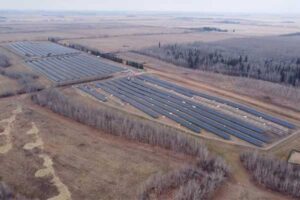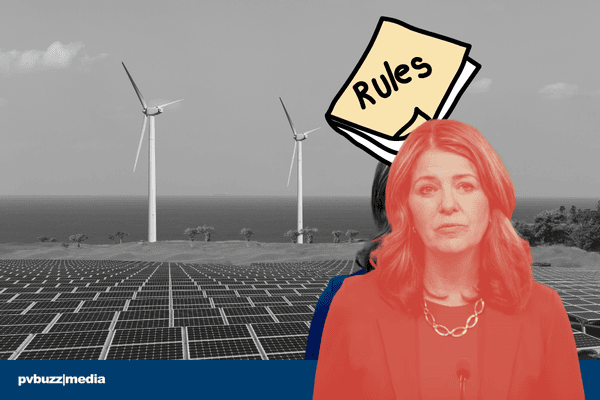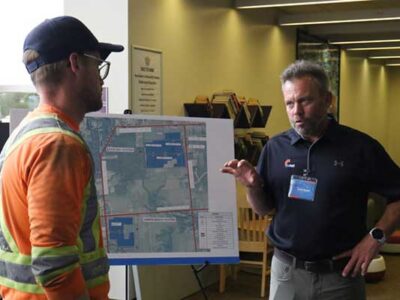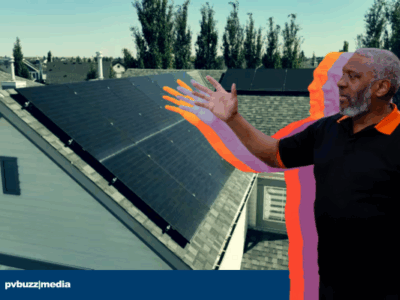- Alberta now requires renewable energy projects to post up to 60% of reclamation costs without factoring in salvage value.
- Industry leaders warn this makes Alberta globally uncompetitive and will drive investment to other provinces or countries.
- The new rules apply to both new and existing projects, increasing regulatory and financial burdens across the sector.
The Alberta government has introduced sweeping new regulations governing reclamation security for solar and wind energy operations, setting what industry observers describe as the continent’s most stringent financial requirements.
Effective May 31, 2025, these rules mandate that new renewable energy projects provide upfront financial security equaling 30% of decommissioning costs, increasing to 60% after 15 years. These rules apply to all new projects and, by 2027, will include existing ones as well.
Critically, the new rules exclude salvage value—the potential recovery from recycling infrastructure like concrete and metals—from the equation, inflating financial requirements beyond what’s seen in other jurisdictions across North America, Europe, or Australia.
“Most Costly in the World”
Jorden Dye, director of the Business Renewables Centre-Canada (BRC-Canada), was blunt in his assessment: “Alberta now has the most costly reclamation security rules for renewable energy projects,” he said, calling the policy “unusual and without precedent.” The decision, he warned, introduces new headwinds for developers who already face tight margins and global competition.
He pointed to recent corporate activity as a bellwether: “Bell Canada’s decision to site its new data centre in British Columbia was influenced in part by that province’s renewable energy access.” In contrast, Alberta’s regulations, he argues, risk deterring the very investors the province has spent years trying to attract.
The Solar Surge at Stake

A solar array that stretches over nearly 15 hectares of land just north of Métis Crossing in northeastern Alberta will produce enough electricity for 1,200 homes. (David Bajer/CBC)
Alberta has led Canada in renewable energy deals, with power purchase agreements enabling 4.77 GW of project capacity since 2019. That’s enough to power nearly two million homes, support 7,000 jobs, and generate $54 million in annual municipal taxes.
Yet the momentum is stalling.
Last year was the slowest on record for corporate renewable deals in Alberta, and project approvals have declined for the first time, according to data cited by BRC-Canada and the Pembina Institute. What’s more, the policy arrives at a time when Alberta’s renewable energy sector is on the cusp of major grid integration upgrades.
The Alberta Electric System Operator (AESO) has signaled its interest in modernizing its infrastructure to accommodate increased wind and solar input. But higher costs and regulatory burdens now risk derailing that transition.
Analysis
The province’s previous pause on renewable energy approvals, lifted earlier this year, had already raised questions about its long-term commitment to clean energy. While officials positioned the new Code of Practice as a means to ensure environmental accountability, the exclusion of salvage value and high upfront security requirements suggest an overcorrection that could choke investment.
In a market where sun and wind are abundant and transferable, capital is not. Renewable energy developers are likely to prioritize jurisdictions with lower entry barriers and more predictable regulatory regimes.
Industry Outlook
While the government argues these rules provide clarity and accountability, developers see them as a deterrent to growth. With policy uncertainty already slowing investment, Alberta risks deepening the chill with rules seen as unnecessarily punitive.
To maintain market confidence, industry groups are calling for immediate consultation and potential amendments — particularly regarding the treatment of salvage value and phased-in financial security.
In a capital-constrained environment, regulatory precision can be the difference between investment and stagnation. For Alberta, restoring its reputation as a competitive, renewable-friendly market may now depend on finding that balance.










Comments